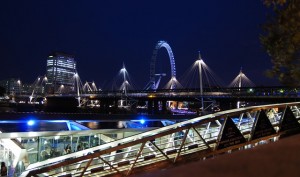London is both one of the most important economic centres in the world as well as a cultural hub for millions of people in the United Kingdom. With architecture reaching back hundreds of years, a bustling and vibrant night scene, and a business infrastructure which is the envy of almost every other city in the world, London mixes perfectly the achievements of its past with a vision for its future.
 Many who visit London do so as tourists, arriving simply to enjoy the sights and sounds of the city which have become famous in every corner of the planet. Buckingham Palace is one of the most famous tourist destinations in London, with visitors from almost every nation in the world hoping to glimpse the extravagant lives of Britain’s royal family. Likewise, hundreds of thousands also visit the Tower of London, London bridge, and the Houses of Parliament all of which are internationally recognised landmarks and impressive in their own right, alongside a number of other incredible sites throughout the city.
Many who visit London do so as tourists, arriving simply to enjoy the sights and sounds of the city which have become famous in every corner of the planet. Buckingham Palace is one of the most famous tourist destinations in London, with visitors from almost every nation in the world hoping to glimpse the extravagant lives of Britain’s royal family. Likewise, hundreds of thousands also visit the Tower of London, London bridge, and the Houses of Parliament all of which are internationally recognised landmarks and impressive in their own right, alongside a number of other incredible sites throughout the city.
While all of these buildings are hundreds of years old, London also offers fascinating and significant modern sites to visitors. The London Eye is the most famous of all London’s modern tourist attractions. A gigantic 135 metres in height, the Eye is a massive revolving wheel, hosting a wide number of viewing booths. As the wheel turns, visitors are greeted with the London skyline, which shows the beautiful amalgamation of ancient and modern London, stretching off into the distance as far as the eye can see.
London is every bit a 21st century city, and is host to religions, races and national identities incorporating a wonderful tapestry of human culture. For many, London is a second home where individuals can come and feel at ease, while maintaining their own dual identity as coming from another country, and yet being part of one of the world’s biggest cities – seeing themselves as Londoners.
Successful business people such as Tunde Folawiyo from Nigeria (for more information visit the Tunde Folawiyo Facebook page) see London as a second home, where they can network and take advantage of London’s peerless business centres, while enjoying the sights and sounds that the great city can offer. It is this combination of infrastructure and cultural cohesion and celebration, which maintains London’s standing as a significant city for commerce, tourism, and positive multiculturalism.